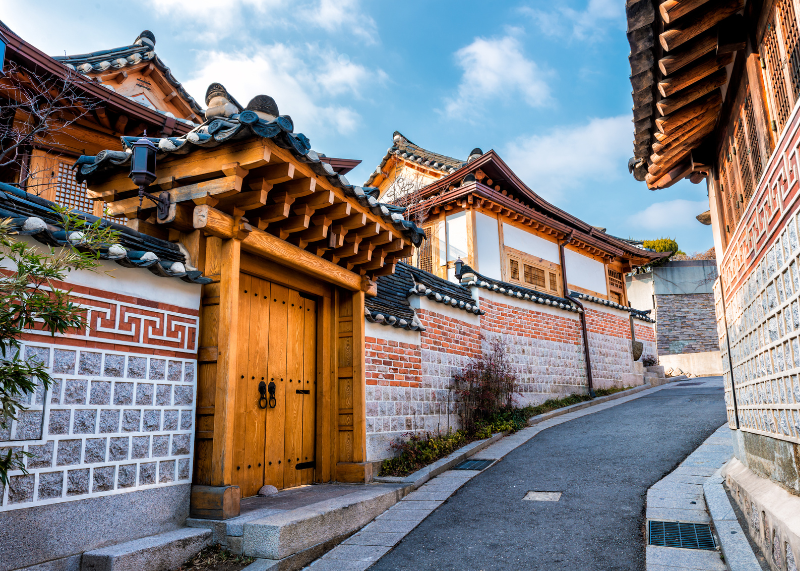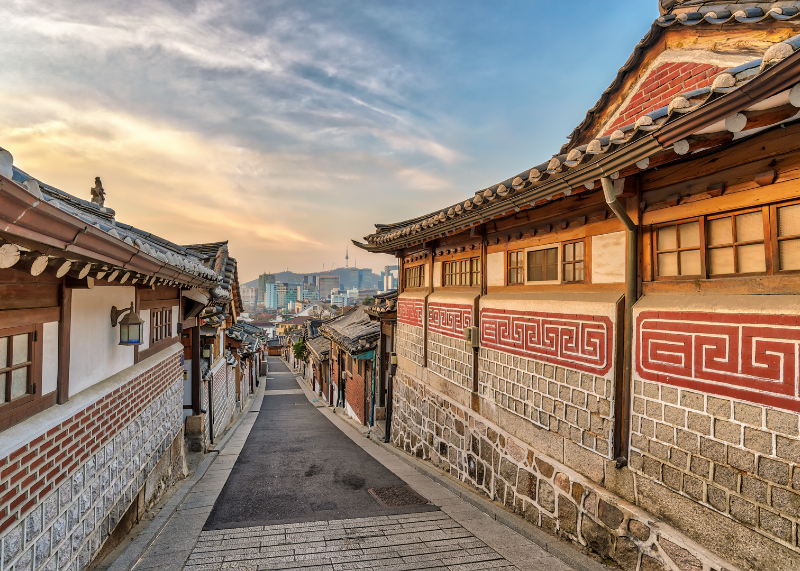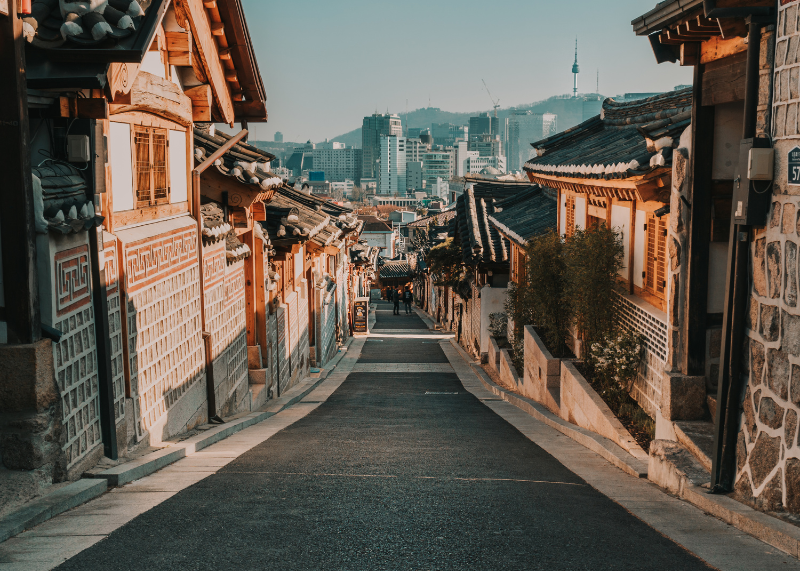




Bukchon Hanok Village reflects 600 years of Seoul’s history. The village is situated between Gyeongbokgung Palace and Changdeokgung Palace, and its streets are lined with traditional hanok. Unlike other hanok villages (such as Namsangol Hanok Village), Bukchon was not created for tourists and it is a residential village inhabited by Seoulites. The best place within Bukchon to experience the old hanok atmosphere may be Gaehoe-dong. Here, hundreds of hanok sit shoulder to shoulder. Bukchon Hanok Village has been loved by many as a travel destination in Seoul as the charm of the traditional hanok is being rediscovered. There are also art galleries, traditional workshops, and restaurants that have been built out from from hanok, making these spaces both traditional and unique. In the Bukchon Hanok Village, which holds history and culture from time past in every alley, the Bukchon Cultural Center delivers information and cultural context for these traditional and historic spaces.
※ Measures to Take When Visiting Bukchon Hanok Village
Although Bukchon Hanok Village is Seoul’s representative hanok village, it is home to many average Seoulites. Unlike Namsangol Hanok Village or other folk villages, Bukchon Hanok Village was not built to be a tourist attraction. The area is a residentialneighborhood where people actually live. Please keep that and the following measures in mind when you visit the village. We ask that you make your trip to Bukchon a quiet trip.
– Please keep noise levels to a minimum, (e.g. no loud voices, horsing around, filming, etc.) especially in the 31 Gahoe-dong area
– Please do not litter
– Please keep group visits small, with a maximum of 10 visitors
– Please do not use microphones, megaphones, or loudspeakers
– Please do not take photos or film the interiors of houses, even if the doors are open
The cultural tours of the Bukchon Hanok Village area, (Gahoe-dong 31, 33, etc.) will be phased out. Please keep that in mind when taking the Seoul City Walking tours.